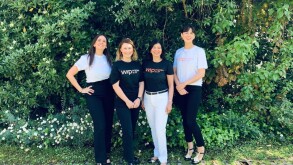In Actavis v ICOS, the UK Supreme Court ruled that some dosage regimen patents will fall short of the requirement for inventive step if a skilled person could have discovered the added benefit of the lower dosage during routine trials.
In-house counsel for pharmaceutical companies argue that the problem with the ruling is that there is no such thing as routine testing.
They say that there are many ways to test for dosage regimens, and research scientists will not necessarily have the time to conduct the necessary trials to find out what the most efficient dosage should be by the time it comes to filing for a patent.
In-house sources say the discovery of the lower dosage could fall outside the bounds of routine testing, and said a dosage could therefore offer an unexpected bonus effect over those previously patented.
“There is a simplistic view held by the UKIPO about how easy it is to test different dosage regimens,” says the IP director for a UK innovator drug company. “If you sit down and talk to the scientists and ask which dosage they should go for, it is complicated to find the right amount because you are experimenting with human beings and what worked in a mouse doesn’t always work in a person.”
He adds that conducting further trials after the discovery of the lowest dose would cost the company time and money.
“There is a huge risk and price to conducting further trials so the idea that all companies need to do is just tweak a drug is not really realistic.”
The UK-based chief patent counsel for a drug innovator describes early stages of drug experimentation as a bit like “stabbing in the dark and hoping you come up with something that works”.
Because drug companies want to find the lowest dosage to treat their patients, it makes sense for research teams to continuously experiment to find said dosage. The problem arises when scientists hit an efficacy plateau and don’t necessarily know where the low end of the drug plateau begins.
“You try to build to where you see a therapeutic effect”, explains the general counsel for biologics of a generic drug company. “There is an awful lot of complicated methodology to see where your drug might bind and how concentrated that is in the system. There are a lot of complicated pharmacodynamics to work out.”
According to in-house counsel at two pharma innovators, there is a gap between what the EPO would consider a good enough surprise effect to justify a lower dosage regimen patent and what the UK Supreme Court considers the output of routine trial-and-error testing. “It is absolutely true that there is no standard guideline for how you conduct your research. The perfect dose is not something you automatically come across, because you are conducting studies on humans and you can’t test every dose and every frequency. That would be unethical,” explains the associate general counsel at a generic drug company.
Obvious outcome
Generics companies welcome the narrower ruling of inventive step that dosage regimens discovered during routine testing do not qualify as inventive step.
“This ruling is a huge win for the generics industry,” says the senior IP lawyer for a US-based pharmaceutical company. “Dosage regimen patents will become a lot harder to uphold.”
The associate general counsel of a UK-based generics company tells Patent Strategy that the ruling from the UK Supreme Court gives new tools for generic drug companies to fight dosage regimen patents.
“The ruling provided more ammunition that as a result of what can be seen as routine, incremental steps should have been seen as obvious. There will be situations in the future where the broader effects of the repurposing of different dosages will not be known.”
He adds there is always a reasonable expectation of success when experimenting with smaller doses. “The UK Supreme Court tried to present its decision in a way that was consistent with previous rulings; that in principle there is no reason why dosing regimens wouldn’t be patentable. In the case of Actavis, there was sufficient similarity to the prior art.”
For drug innovators, the consequences of the UK’s higher standard of inventive step will lead to a rethink when in the research process, so they can say with more certainty what the most effective dose is when they file for patents.
An additional consequence of the higher standard for inventiveness is many drug makers might see previous dosage regimen patents weakened.
The senior legal counsel for a UK generics company argues that a broader definition of inventive step including unexpected results from lower doses would have been detrimental for the generic drug industry because the goal of conducting medical research is to find the unexpected.
“If what you are trying to protect by a patent is only the result of routine steps you can’t get a patent for that even the results of those steps were not predictable at the offset of the trials,” he says.
“Drug innovators are trying to argue that even though all the tests that have led to an invention are entirely routine you can still get a patent to the extent the end result was unexpected. Which does not make sense because the whole point of doing trials is to find something unexpected.”
The IP director for the UK pharma innovator says the UK Supreme Court’s ruling on new dosage regimens found from routine trials sets a very high standard of inventive step in the UK. The take away he argues could be drug companies filing their patents at different times in the research process.
“People who got patents granted for dosage regimens where this additional requirement didn’t exist might be in a situation where they see their patents weakened,” he says.
Inventive or not, recipients of tadalafil can now appreciate taking a low dose once a day instead of a higher dose half an hour before demand.










